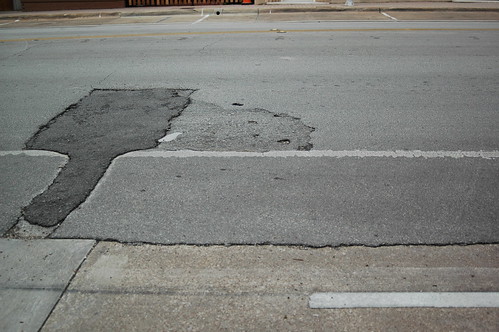My next book, Bikenomics: How Bicycling Can Save the Economy, comes out December 1st. I gave a talk at the Portland Art Museum on July 14th as part of a panel on the topic—here’s a version of what I read, an edited excerpt from the book.

The American Automobile Association publishes a report every year on the cost of driving. In 2013, they calculate that the average cost of driving a new sedan for the year is $9,122. This cost includes based on car payments, insurance, maintenance, new tires, license, registration, and gas at current prices. It does not include parking… or parking tickets.
One of the largest expenses they include—$3,500—is depreciation. I didn’t understand this cost until recently and assumed that it was being used to inflate their estimates. But the more I learn, the more I realize that this is the most important line item on their list.
When you buy a new car and drive it off the lot, it begins to lose value. If you want to turn around and sell it the next day, you’ll get back considerably less money than you just spent—maybe only half as much, depending on the vagaries of the used car market. We make other investments, like houses—or unique bicycles like the ones at this exhibit—with the understanding that they will keep their value or even grow in value, producing wealth in the long run. When this doesn’t happen, it causes poverty, and when it begins to systematically not happen, as has been occurring since the recession began in 2008, it is a national crisis.
In this way, a car has never been a good investment—no matter how good the car, or how well you care for it and how much utility and enjoyment you get from using it, you end up losing money in the long run.
Depreciation is, for many individual consumers a hidden cost. But any responsible accounting of the costs of driving includes it as one of the largest associated with car ownership. The fact that such a large and unprofitable investment is necessary to living and working in most areas of this country is a major source of poverty and failure to get ahead for people and families, and is a hidden source of poverty on a national scale.
The same exact principle is at work in our road system.
It’s depreciation at the societal level. It’s irresponsible not to plan for it, but we do not. A freeway, once built, immediately begins to deteriorate and become congested, it loses its ability to provide the jobs that often were much of the argument for building it in the first place.
Road projects are sold to politicians and the public based on their sticker price alone. The long term cost of investing in a large new freeway is far deeper and farther reaching than the decision of a middle-income American to spring for the fully-loaded truck with four wheel drive when even a smaller, more fuel efficient car would be a drain on their finances.
In fact, drawing a connection between the impoverishing effects of car ownership and road building is more than just a metaphor. By rights, we should include the costs of driving paid by individuals when we account for the total costs of road projects, as these private investments are another level of subsidy. Train tracks would be useless without investing in trains to run on them; roads require that the users of the transportation system personally pay for the vehicles which are necessary for the system to work. This is perhaps at the heart of the sense many people have that bicyclists do not pay their way: The roads we use are often the same, but the personal investment required to use them is nearly nothing. This knowledge surely must feel deeply unfair.
And so it is—but that unfairness is not the doing of people riding bikes. The trap of cars and roads is a strong one—and the consequences are not evenly distributed. When you ride a bicycle, you escape it. There are other prices you may pay—opportunities are lost as well as gained—but many find that it is worth it, and as more people take to two wheels and our streets change to make room for them, it only gets better.
Just as roads and cars necessarily operate at a net negative, losing money for their entire lifespans, bicycling and bicycle infrastructure produces a net positive return. This goes beyond simple accounting. Many of the opportunities lost while sitting in a car are gained on a bike. Fitness, health, financial solvency, and pleasure are personal examples—on a societal level, it’s about the integrity of our common resources and and the existence of our civil society.
The Bikenomics book draws its inspiration from a 40 page zine I wrote in 2011, with a similar title, which you can find here. The book itself comes out December 1, 2013. You can possibly get one before the release date, as soon as they’re printed, by pre-ordering a copy here.